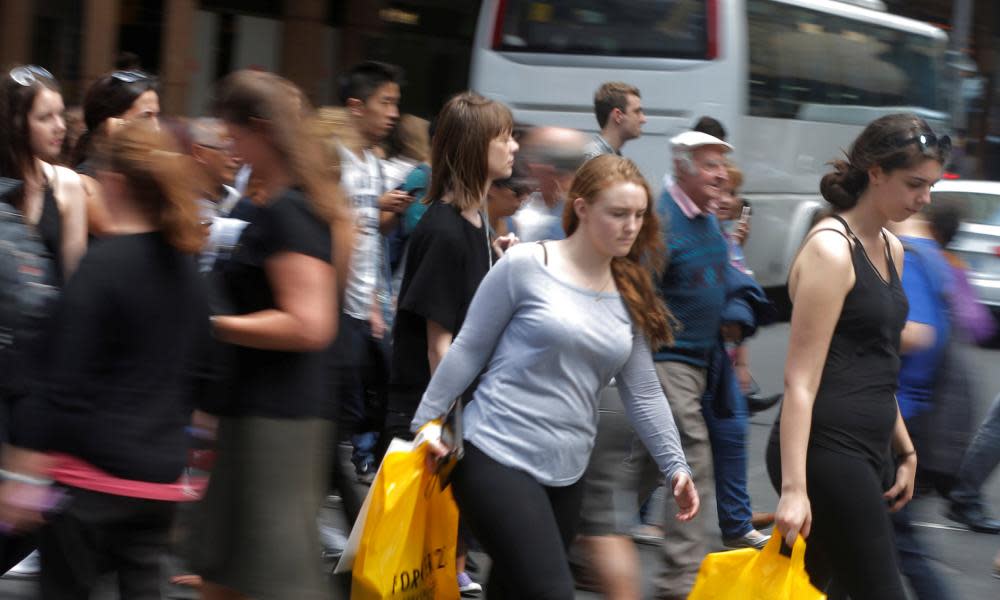Melbourne and western Sydney driving most of Australia's population growth

Most of Australia’s population growth is being driven by outer Melbourne and western Sydney, new data from the Australian Bureau of Statistics has revealed.
Statistics for 2015-16 show Melbourne has become Australia’s fastest-growing city, while greater Sydney’s total population pushed past five million as of June last year.
Melbourne and Sydney accounted for 56% of the nation’s population growth, with state capitals together responsible for 82% of the national increase.
Much of the country’s fastest growth occurred in the outer suburbs of existing urban centres. The newly constructed Canberra suburbs of Wright and Coombs topped the list with 38.2% per cent population growth, followed by Pimpama on Queensland’s Gold Coast (35.1%), Yanchep in outer coastal Perth (29.3%) and Cobbitty-Leppington in Sydney’s south-west (27.6%).
Melbourne laid claim to four of Australia’s five largest suburbs in absolute growth. The outer suburb of Cranbourne East grew by 4,956 people, along with South Morang (4,971), Craigieburn-Mickleham (4,491) and Point Cook (3,512).
All of New South Wales’s ten largest growing suburbs were in greater Sydney, with the Cobbitty-Leppington and Riverstone-Marsden Park regions the nation’s fourth and seventh fastest growing areas respectively.
Greater Melbourne similarly held all of Victoria’s largest growing areas, with the city adding 108,000 residents to reach a population of 4.64 million.
“The Victorian story is quite fascinating,” said social demographer Mark McCrindle. “It is one of the two states that has what we call the ‘triple green light of growth’: natural increase, net overseas migration and net interstate population growth.”
“Queensland has always dominated that space, and having Victoria there shows how Melbourne is growing through the strength of the Victorian economy, with Sydneysiders and people from other states and capitals heading there. The house prices are below that of Sydney, but the infrastructure and wages are just as competitive.”
The suburbs suffering the greatest net population loss were Mount Isa (-510 people) and Emerald (-260) in Queensland, Broken Hill in NSW (-310), and Leinster-Leonora (-330), Boulder (-270), Kambalda-Coolgardie-Norseman (-210) and Meekatharra (-210), all in Western Australia.
“Part of the challenge of growth areas like Western Australia and the Northern Territory is to have sustainable growth,” said McCrindle. “Areas whose population goes down are usually linked to economic fortunes. Remote areas like Kalgoorlie have had a history of population increase and decrease. Darwin itself has years where the growth is massive and some years where it borders on decline.”
Last year, Palmerston-South in Darwin was the Northern Territory’s fastest growing region, while South Australia stayed relatively stable.
On the whole, Melbourne grew by 2.4%, Brisbane by 1.8% and Sydney by 1.7% as Australia’s population reached 24.1 million.
“For Sydney to grow – in less than a generation – from 1958 when it was two million, to now hit five is pretty phenomenal,” said McCrindle.
“Population growth is continually taking planners by surprise. We are sort of dealing with population growth we weren’t planning on. The three fastest growing Victorian suburbs are all outer Melbourne areas, which highlights the need for improved outer urban infrastructure. Melbourne has got a great public transport system but probably hasn’t been doing enough for the roads,” he said.
“Sydney is going to add a new Perth – two million people – to its population in the next 20 years. For Melbourne, with more than a 100,000 increase, that’s a whole new Ballarat you’re adding every year. That sort of growth requires some significant infrastructure injection.”

 Yahoo News
Yahoo News 
